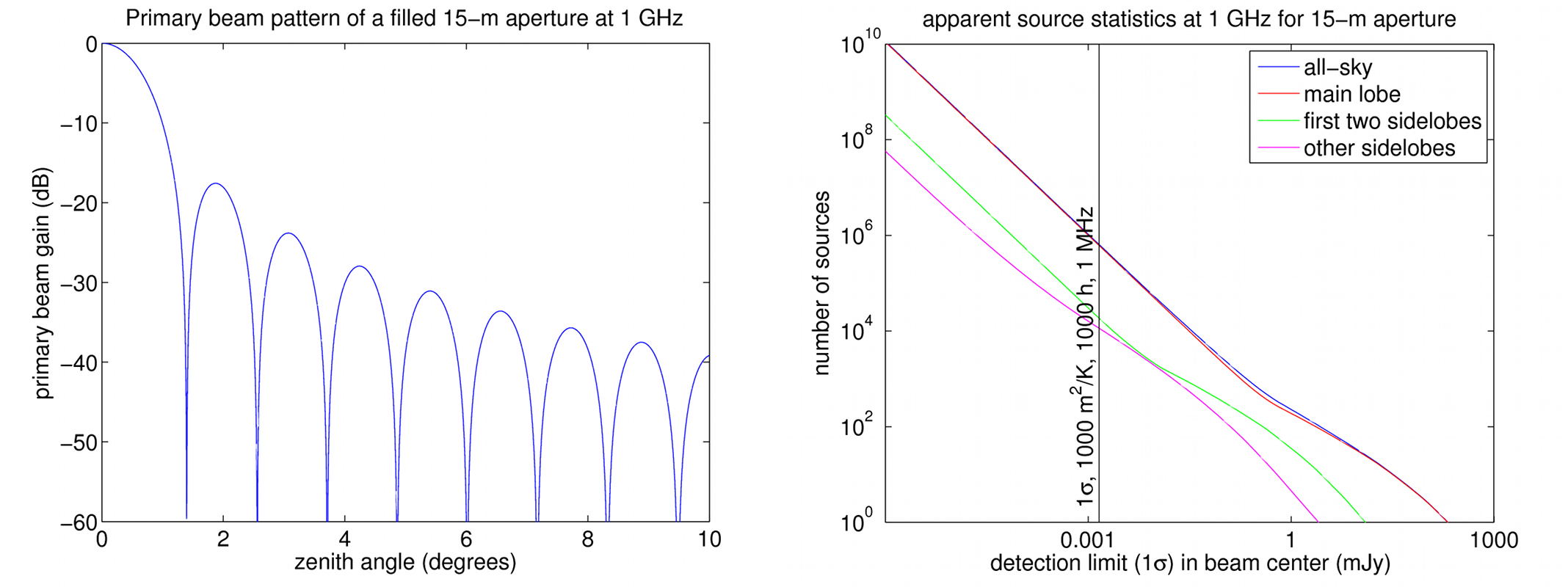Daily Image
31-10-2014Calibratability Fundamentals (1): Apparent source statistics
| Submitter: | Stefan Wijnholds |
| Description: | There is a convenient rule-of-thumb that says that, when the sensitivity of a (radio) telescope increases with a factor n (e.g. n=10), roughly n times more sources become visible above the noise. Since all these faint sources will be convolved with the telescope PSF(*), their cumulative sidelobes can increase the noise to the level where it nullifies the (very expensive) nominal sensitivity of the telescope. This will be an issue for the new generation of giant radio telescopes. Certainly for the SKA, but already for specific LOFAR observations. In order to analyse the problem, we first have to understand the "apparent source statistics", i.e. the statistics of sources that will be visible in the field-of-view of a particular telescope. To get some feeling for this, we assumed a primary beam with the shape of an Airy pattern, the theoretical power beam pattern of a homogeneously illuminated circular aperture(**). The Airy pattern for a 15-m aperture at 1 GHz is shown in the left panel. We then used this to filter the known source statistics at the observing frequency of 1 GHz, to obtain the apparent source statistics shown in the right panel. The vertical line gives a rough indication of the 1-sigma limit for the SKA dish system after 1000 hours of integration over 1 MHz. Note that the same limit holds for 100 hours over 10 MHz and 10 hours over 100 MHz. The various curves indicate the total number of sources brighter than a given apparent flux, for various lobes of the primary beam. They show that almost all (over 85%) visible sources typically reside in the main lobe, with most of the others located in the first two sidelobes. The number in the far (>2nd) sidelobes is typically less than 1%. All this is encouraging, because calibration is easier in the main lobe. However, it should be noted that this ratio will be different for different primary beams, and after subtracting as many sources as possible. Unfortunately, the problem will be exacerbated for the new telescopes, since they are sensitive to hitherto invisible source populations that cause the density of sources to increase more steeply with decreasing flux. In a future AJDI, we will present a useful plot(***) that makes it easy to determine the extent of the problem for various existing and proposed radio telescopes. It indicates how low the PSF sidelobe level has to be for a given nominal sensitivity, and how many sources have to be subtracted. (*) Point Spread Function (**) PSF sidelobes are higher for unfilled apertures (***) This plot was presented at the recent URSI GA in Beijing |
| Copyright: | Stefan Wijnholds |
| Tweet |  |
